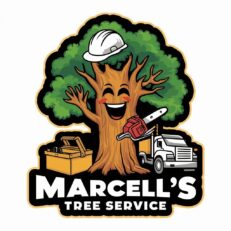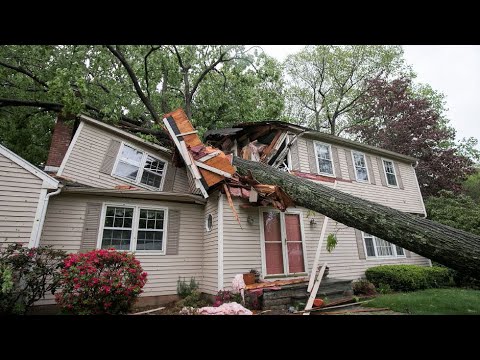30 Best Trees For Louisville Yards. Here is a list of thirty of some of the most beautiful trees that can be found in Louisville, Kentucky.
30 Best Trees For Louisville Yards.
HARDY CEDAR OF LEBANON
Height 40 – 60 ft.
This is one of the most winter Hardy trees of all of the cedars. A Mediterranean native from mountains in Turkey. This tree grows slowly and ends up having a stiff and rigid almost column-type shape.
The branches change colors. They are bright green when the tree is young, greyish green as it gets a little older, and a darker green when it is old.
The male tree cones are long and end up shedding gold pollen in the spring, and the females are upright, and they’re shaped like an egg.
The Hardy Cedar needs full sun and a lot of room to grow to its beautiful potential. It is adaptable but does not do well in flooded soil. Although it can be planted in a yard it is better for larger areas like parks.
30 Best Trees For Louisville Yards
WHITE OAK
Height 50 – 80 ft.
A hardwood of central & eastern America, native to the same area. It’s called white oak, but it actually has more of a light grey color. The name “white oak” comes from the finished wood color. When left to grow in a wide-open area, like a forest, it turns into a massive tree and the branches strike out at extremely wide angles.
SPICEBUSH
Height 6 – 12 ft.
This tree is a native of Missouri and it is a shrub that is deciduous and usually grows up to twelve ft. in damp areas. Bunches of little yellowish-green flowers will bloom beautifully on the branches. The flowers will bloom before the leaves are seen.
KENTUCKY COFFEE TREE
Height 60 – 80 ft.
This tree is native to the upper south and Midwest of North America. It is called the Kentucky Coffee Tree because of its seeds that can be roasted & used for coffee beans but remember, do not use the seeds if they are not roasted. The seeds and pods are poisonous when they aren’t roasted.
WEEPING NORWAY SPRUCE
This is a conifer tree whose branches will droop down drastically.
LOEBNER MAGNOLIA
Height 20 – 30 ft.
Magnolia is a deciduous hybrid. It has a crown that is round and at the tallest, this tree can grow to twenty ft. It has a single tree trunk that grows in a multi-trunk shape.
YARWOOD PLANETREE
Height 75 – 100 ft.
Such a beautiful tree, so attractive and popular. It’s adaptable and tolerates road salt and adverse conditions. It has some gorgeous brown and whitebark that looks amazing in the wintertime, with some strange-shaped leaves.
This is one tree that is more disease resistant than most. The forest green leaves last the entire season but in the fall they seem to be a copper color. The flowers and fruit are not ornamentally important.
PERSIAN IRONWOOD
Height 20 – 40 ft.
Another deciduous tree that is small – to – medium in size but in the end can grow up to forty ft. in height altho9ught it usually takes about eight years for it to grow just ten ft. tall.
PAWPAW KNOWN AS ASIMINA TRILOBA
Height 15 – 30 ft.
This tree is known for its berry fruit that is banana-like and has purple blooms, and it grows best in moist soil. This is yet another deciduous tree that stays small and is native to Canada and the eastern U. S. The fruit itself is greenish yellow & brown in color.
SILVER CLOUD REDBUD
Height 20 – 30 ft.
This is a gorgeous tree with pink and white leaves. It has pink flowers on its bare branches that fill the space between winter to spring. It just needs partial sun to survive and thrive.
CUT LEAF EUROPEAN BEECH
Height 50 – 60 ft.
Breathtaking trees with beautiful foliage and dark grey bark. The foliage is a dark green that turns golden brown in early fall.
DAWN REDWOOD
Height 60 – 80 ft.
This tree grows fast and lives a long time, as well, it is a conifer that is deciduous and endangered. It’s the only species that has lived in the Genus Metasequoia family. It lives in lower, wet slopes, stream valleys, and the montane river in the area of the Hunan & Hubei provinces. Even though it is the smallest of the redwoods, it can still grow up to one hundred – twenty ft.
BLACK TUPELO OR BLACK GUM
Height 30 – 50 ft.
This tree has many beautiful colors (red, orange, burgundy, and yellow foliage). It is extremely adaptable and does really well in the heavily soiled areas that are poorly drained.
Swamp White Oak
Height 50 – 60 ft.
This tree can survive in many different areas. It is known mostly in the northeastern and north-central parts of America. It’s fine with either dry or wet soil and gives off an abundance of shade.
Venus Dogwood
Height 15 – 20 ft.
A beautiful tree with extremely large white flowers. These flowers reach about six inches in width. The tree is amazingly vigorous and promotes a wide plant that reaches about twenty ft. in width and eighteen ft. in height.
Girard’s Maple/Hybrid Paperbark Maple
Height 15 – 30 ft.
This is an extremely rare maple, and it has pretty reddish fall colors with a cinnamon type of stick bark. It is a hybrid tree created by two Chinese types that have trifoliate leaves. This is a remarkable tree because it is heat tolerant, insect resistant, and disease resistant.
Lace Bark Pine
Height 30 – 50 ft.
The foliage of this tree has evergreen needles that are dark green, It develops peeling bark that underneath reveals spots of green, purple, and white patches of skin which sets it far apart from other pines. It can sometimes take up to ten years for the bark to start peeling. On older trees, the patches of skin will turn completely white. It has pinecones that will measure about three inches long.
Yellowwood
Height 30 – 50 ft.
Absolutely beautiful flowers with a wonderful fragrance to them, yellow in the fall. It’s native to North America with a wide range that reaches from North Carolina to Kentucky.
Golden Glory Cornelian Cherry Dogwood
Height 15 – 20 ft.
In the winter, this tree has beautiful yellow flowers with peeling bark. Known as a small tree or a shrub and is native to southern and ventral Europ0e. Over time it can grow to 15 – 25 ft.
Amazing Grace Katsura
Height 18 ft.
Beautiful fall colors and weeping, graceful branches that form a mound and look like green-blue water falling down over rocks. Would be absolutely stunning to use in a small garden.
Three Flower Maple
Height 20 – 30 ft.
Pretty orange-red, and yellow colors in the fall. This maple is a kind of maple that is native to the hills of Korea and China. Another deciduous tree can reach a height of around eighty – two ft. if left to grow in the wild.
Shawnee Brave Baldcypress
Height 50 – 70 ft.
Needing full sun to thrive this tree has no flowers to bloom, it can live in wet soil and would be a great tree for a rain garden. It grows best in wet soil but can tolerate a big range of soil types.
Bottlebrush Buckeye
Height 8 – 10 ft.
This popular tree makes an excellent border of shrubs with its pretty, white blooms that have pink and red in them. These are some of the best summer flowers that have won many awards.
Mount Airy
Height 5 – 6 ft.
The foliage of this deciduous shrub is dark green with honey fragrance flowers.
Cumulus Serviceberry
Height 10 – 20 ft.
A deciduous shrub that is really low in maintenance and will need to be pruned after the severe cold is gone. It has lovely white flowers and fruit that are edible with beautiful colors of fall.
Winterthur Viburnum
Height 6 ft.
Decorative red foliage and blue fruit make this deciduous shrub an eye-catching tree. Native to swamps, bogs, and low-lying woods from Louisiana to Florida to Connecticut. Another name for this shrub is Smooth Withered, and if left in the wild it can grow up to twelve ft. tall.
Summersweet Hummingbird
Height 3 – 3 1/2 ft.
Beautiful deciduous shrub with golden yellow fall colors. This is a lovely, slow-spreading, and compact little tree that has spikes of gorgeous white flowers that blossom for four – to six weeks in the late summer.
Blue Ash
Height 85 ft.
This tree can be found in the bluegrass areas around the Kentucky River Palisades and in other areas that have a limestone type of soil. A beautiful Kentucky native that blooms little beautiful flowers, has bunches of pretty hanging seeds and colorful foliage. It grows best in the full sun and makes for a wonderful shade tree.
Green Ash
Height 150 ft.
It needs full sun to grow to its full height.
Persimmon
Height 75 ft. +
Another tree that is native throughout all of Kentucky is in the dry forest areas. The bark of this tree is dark grey and looks like a square, scaly block.
The fruit when growing is extremely messy so it’s not s good tree to have planted in your yard or for landscaping. It’s better for it to be grown in areas like a golf course or maybe even a park. It thrives best in sandy, moist soil and requires full sun.


